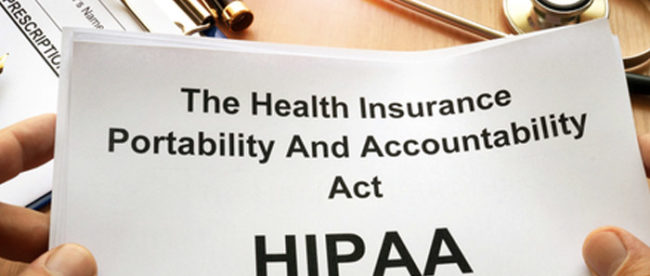Facts About Pacific Prime Uncovered
Facts About Pacific Prime Uncovered
Blog Article
The Ultimate Guide To Pacific Prime
Table of ContentsSome Known Questions About Pacific Prime.The Definitive Guide to Pacific PrimeA Biased View of Pacific PrimePacific Prime Fundamentals Explained7 Easy Facts About Pacific Prime Explained

This is due to the fact that the information were gathered for a period of strong economic efficiency. Of the approximated 42 million people that were uninsured, almost about 420,000 (concerning 1 percent) were under 65 years old, the age at which most Americans become eligible for Medicare; 32 million were grownups in between ages 18 and 65, about 19 percent of all adults in this age; and 10 million were youngsters under 18 years old, about 13.9 percent of all children (Mills, 2000).
These quotes of the number of individuals uninsured are generated from the annual March Supplement to the Present Populace Survey (CPS), carried out by the Census Bureau. Unless otherwise noted, nationwide price quotes of people without health insurance policy and percentages of the population with various type of insurance coverage are based upon the CPS, one of the most extensively made use of resource of estimates of insurance policy protection and uninsurance prices.
Rumored Buzz on Pacific Prime

Still, the CPS is especially valuable due to the fact that it generates annual estimates reasonably swiftly, reporting the previous year's insurance protection estimates each September, and since it is the basis for a regular collection of quotes for more than 20 years, allowing for analysis of fads in protection with time. For these factors, in addition to the substantial use the CPS in various other research studies of insurance protection that exist in this record, we count on CPS estimates, with constraints kept in mind.

The price quote of the variety of uninsured individuals expands when a population's insurance standing is tracked for a number of years. Over a three-year duration beginning early in 1993, 72 million individuals, 29 percent of the united state population, were without insurance coverage for a minimum of one month. Within a single year (1994 ), 53 million individuals experienced a minimum of a month without protection (Bennefield, 1998a)
6 out of every ten uninsured grownups are themselves utilized. Although functioning does enhance the possibility that one and one's household members will certainly have insurance policy, it is not an assurance. Also members of families with 2 full-time wage income earners have practically a one-in-ten opportunity of being without insurance (9.1 percent uninsured rate) (Hoffman and Pohl, 2000).
The 9-Minute Rule for Pacific Prime
New immigrants represent a considerable proportion of people without health insurance policy. One analysis has connected a significant part of the current growth in the size of the U.S. uninsured populace to immigrants who showed up in the nation in between 1994 and 1998 (Camarota and Edwards, 2000). Current immigrants (those who involved the USA within the previous 4 years) do have a high price of being uninsured (46 percent), but they and their kids make up just 6 percent of those without insurance coverage across the country (Holahan et al., 2001).
The partnership in between medical insurance and access to care is well developed, as documented Go Here later in this chapter. Although the connection in between wellness insurance policy and wellness end results is neither direct nor simple, a substantial scientific and health and wellness services research study literature links health insurance policy protection to better accessibility to care, much better high quality, and improved personal and populace wellness condition.
Levels of evaluation for checking out the impacts of uninsurance. This discussion of health and wellness insurance protection focuses mainly on the united state population under age 65 due to the fact that essentially all Americans 65 and older have Medicare or other public insurance coverage. It focuses specifically on those without any type of wellness insurance policy for any size of time.
Some Known Questions About Pacific Prime.
The troubles faced by the underinsured remain in some respects comparable to those encountered by the uninsured, although they are generally less severe. international travel insurance. Uninsurance and underinsurance, nevertheless, include clearly various plan problems, and the approaches for addressing them might vary. Throughout this research and the 5 reports to comply with, the primary focus is on individuals without medical insurance and hence no aid in spending for health and wellness care beyond what is available through charity and safety and security internet establishments
Health insurance policy is an effective element affecting invoice of treatment since both patients and medical professionals react to the out-of-pocket price of solutions - https://linktr.ee/pacificpr1me. Medical insurance, however, is neither essential neither enough to obtain accessibility to medical services. Nonetheless, the independent and straight effect of medical insurance coverage on access to health solutions is well developed.
Others will get the health and wellness care they require even without medical insurance, by paying for it expense or seeking it from providers that provide treatment complimentary or at highly subsidized rates. For still others, health insurance policy alone does not guarantee invoice of care due to the fact that of other nonfinancial barriers, such as an absence of healthcare service providers in their area, limited accessibility to transportation, illiteracy, or etymological and social differences.
The Ultimate Guide To Pacific Prime
Official research regarding uninsured populaces in the USA dates to the late 1920s and very early 1930s when the Committee on the Cost of Healthcare created a collection of reports about financing doctor workplace visits and hospital stays. This problem came to be significant as the varieties of clinically indigent climbed up during the Great Depression.
Report this page